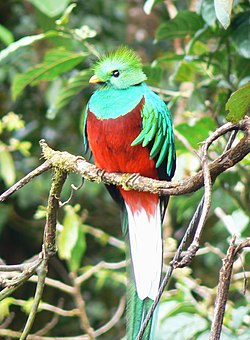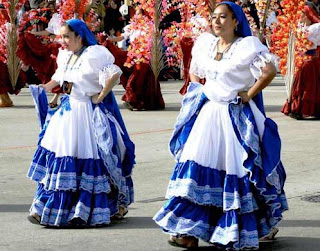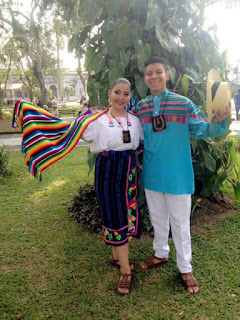LANGUAGE
Spanish is the official language and is spoken by virtually all inhabitants. Some indigenous people speak their native tongues such as nahuatl.
Nowadays El Salvador is characterized by its peculiar way of speaking since it uses different language, and I do not mean Nahuatl, rather it is language acquired as a slang (Special linguistic modality of a certain social or professional group whose speakers use only in how many members of that group)
For example :
1. ¿Qué onda, bichos?
Rough English translation: What’s up, guys?
2.Púchica!
Rough English translation: Shoot! [Can also
be used as a positive exclamation when impressed.]
3. Ta’ chivo, ¿vá?
Rough English translation: It’s cool, isn’t
it?
4. Cabal.
Rough English translation: Exactly.
5. ¿Onde está el bolado?
Rough English translation: Where is the
thing?
6.ACHIS: Salvadoran expression that highlights that a
particular situation, which causes amazement or does not
interested, scared or not accepted
7. Dar en la nuca:
Compromising situation that denotes stabbing
by the back
QUEZALTEPEQUE
Etymology:
Colonial period
A municipal report dated in 1860 tells: “This town is growing in buildings and population because it has two thousand nine hundred ninety five inhabitants, a church almost finished and a cloister, a school in the same conditions, three hundred thirteen houses, five valleys named Realengo, Potrerillos, Aposentos, Macanse y García, three manors Atapasco, Tacachico and Tutultepeque”.

· José Rutilio Quezada: writer, botanist and entomologist.

ALEGRÍA
Tecapa comes
from “tec” means stone and “yapa” that means river or lagoon to form “tecapa”
“lagoon of stones”. Zapotitán comes from “zapot” that means “zapote”, a fruit
and “titan” that means “place between” to form “place between zapotes”.

Alegría gets
its title Village in 1874 because of their growing, five years later got the
title of City.
QUEZALTEPEQUE
Etymology:
Quezaltepeque means “City of
Quetzal”. “quetzal” is a bird and national symbol of Guatemala and “tepec” that
means mountain or community.
Colonial period
According to
bishop Pedro Cortés y Larraz by 1770 Quezaltepeque was called “San José
Quezaltepeque” and it had a population approximately of one thousand people and
they were all crossbreeds.
Central
American federation
During this time Quezaltepeque
was a town joined to “Opico’s party”. In 1832 Quezaltequeque leaves Opico’s
party to join to San Salvador’s party. In 1839 San Salvador became in “Distrito Federal de la
República Federal de Centro América” so Quezaltepeque was included too.
A municipal report dated in 1860 tells: “This town is growing in buildings and population because it has two thousand nine hundred ninety five inhabitants, a church almost finished and a cloister, a school in the same conditions, three hundred thirteen houses, five valleys named Realengo, Potrerillos, Aposentos, Macanse y García, three manors Atapasco, Tacachico and Tutultepeque”.
Titles:
Quezaltepeque
gets its title of Village in 1890. The tile of City is gotten in 1905.

Famous people from Quezaltepeque:
· José Rutilio Quezada: writer, botanist and entomologist.

ALEGRÍA
 |
| Downtown |
Alegría in
the past were two populations called Tecapa and Zapotitán respectively who where dived just by a
street.
Etymology:
 |
| Alegría's lagoon |

According to
Manuel de Gálvez Corral by 1740 Tecapa and Zapotitán had thirty 8 and thirty
seven heads’ families respectively with populations around one hundred ninety
people for Tecapa and one hundred eighty seven for Zapotitán.
Nineteenth
century
In 1824 The
Department of San Miguel was created, Tecapa and Zapotitán are included in its
geographical area.
Around 1837
or 1838 the priest Don José Miguel Alegría came to Tecapa and founded a
philosophy school were he taught for more than twenty years. This priest was
recognized in 1857 by the government because of his service to the town.
Usulután is
created in 1865, Tecapa leaves San Miguel and became part of the new department
but Zapotitán is not mentioned again because the twin towns became one.
Other facts:
Tecapa -
Alegría. The change in town’s name is proposed by a disciple of priest Miguel
Alegría, who was a congressman called Leandro Guzmán, in 1891 the proposal is
approved. This proposal was approved because of the great service
 |
| Alegría's lagoon 1915 |
TRADITIONS OF EL SALVADOR
The traditions are: Beliefs trasmitted generation by generation.
Remember: Traditions are thoughts and
practices, handing down from generation to generation.
*Celebrate the Holy Week. (The people
prepare a colored Wood dust carpet in preparation
for good friday procession in
San Salvador).
*Celebrate Christmas and new year
*Celebrate Independence Day( September
15th).
*Celebrate San Valentine's Day.
*Celebrate Mothers Day.
*Celebrate Father's Day.
*Child Day.
* Celebrate the carnival of San Miguel
city.
*Cross day.
*Fireballs in Nejapa city.
* Celebrate
festivities of the town in honor of our
patron Saint.
THE COSTUMS
The customs: Are way of behaving or doing
something.
The main customs of El Salvador
* Go to the festivities of the town that
are call them " fiestas patronales". Here you can find mechanical
games ( known as "ruedas").
*Typical candies ( known as
"conserva") and typical craft.
Salvador have many legends for example:
El padre sin
cabeza, la siguanaba, el cipitio, el
cadejo, la carreta chillona and among others.
The different traditional play in El
Salvador
*Arranca cebolla, (pull the onion).
*Tripa chuca, (dirty guts).
*Capirucho.
*Trompo and Chibola
.
These games are usually played by children.
TYPICAL FOOD
The tipical food.
-pupusas
- empanadas
- tamales
-pasteles
- enchiladas
- chuco
- nuegados
-chilate and among other typical food.
SALVADOREAN SIMBOLS
Bird: Turquoise-browed Motmot (Torogoz)
Coat of Arms:
Coat of Arms: The coat of arms has been in
use in its current form since 15 September 1912. ...
Flag of El Salvador.
Flower: Flor de Izote.
Motto: "Dios,
Unión, Libertad" "God, Union, Liberty"
Tree: Maquilishuat.
Some Salvadoran poets
are:
Alfredo espino and Vicente Acosta.
DRESS CODE
Typical code dress are a current representation of the clothing
that once used our old generations, without a doubt are an important part of
our culture and they are also an important part of our traditions and festivities.
It should be noted that there is no general
code dress for the entire country, but we can find several representations that
frame specific specific geographical regions that we will know in this blog. So
we will know each of those who exist together with their description and
meaning.
Volcaneña
Volcaneña costume distinguishes women from
La Libertad and the central area of El Salvador. It consists of a “Chal” long
and it is of just one color and serves to represent dances known as
"Adentro Cojutepeque" and "El Carnaval de San Miguel". It
is the suit that is also used in most school celebrations and is the best known
in the outside as a typical costume of El Salvador. It has been imposed as a
national costume but originally only was used by women of La libertad and some areas of the Central Region.
Costume of the Panchas
Used in San Salvador and Panchimalco, is
very similar to that of Volcaneña with the variant that the skirt is usually
dark in contrast to the white blouse and always cotton.
In addition, a yellow strip used for the
waist for single women and a red or without a girdle for women already
married,also is being a brand of the land of Pachimalco. It is one of the most
famous; It is very used in San Salvador, Panchimalco and in the central area,
the color that predominates is black and the singles use it with a yellow
strip.
Izalqueña
Izalqueña costume is inherited by
pre-Columbian times and which is characterized by the use of skirts of many
colors,and a whole range of costumes where the abundant color predominates. The
blouse is called Güipil and the skirt or guy that is a single canvas is
called underskirt and is distinguished
by the peculiarity of handling different colors for each people, being the
embroidered the signal to differentiate them. It is the suit that is handled
throughout the western area and the most recognized as part of the Pipil inheritage in El Salvador.
Nahuizalqueña
Nahuizalqueña costume are popular because
they come from the areas where Izalco and Nahuizalco arose reflected many
similarities and clearly show the indigenous past of El Salvador. The fabric is
embroidered by hand in various colors and embroidery is one of the region; That
is to say one or another can recognize their origin based on the embroidery of
the suit. The suit consists of a white blouse and a skirt called “Cuaiste”that
combines with a short but waoff blanket that covers their backs.
Cacaopera
Cacaopera costume is own of the eastern
zone, especially, in the department of Morazán. The skirt and the blouse are
made in the same color, generally clear, using a light material and
complementing it with a white apron with a series of colored embroidery.
Campecina
Campecina costume is constituted by two
pieces, the stroke of this is called "whole court" because the blouse
goes together with the skirt. The blouse is very stuck to the body and the
skirt is paletoneed, the flight is three-canvas and long comes to the middle of
the calf. Complement takes the Chal and lately a towel.
Castillo Marroquin , Bany Batzai
Fuegos Barahona , Liliana Bernardina
Moz Reyes , Estefany Johanna
Monterrosa Rodríguez , Douglas Guillermo












































